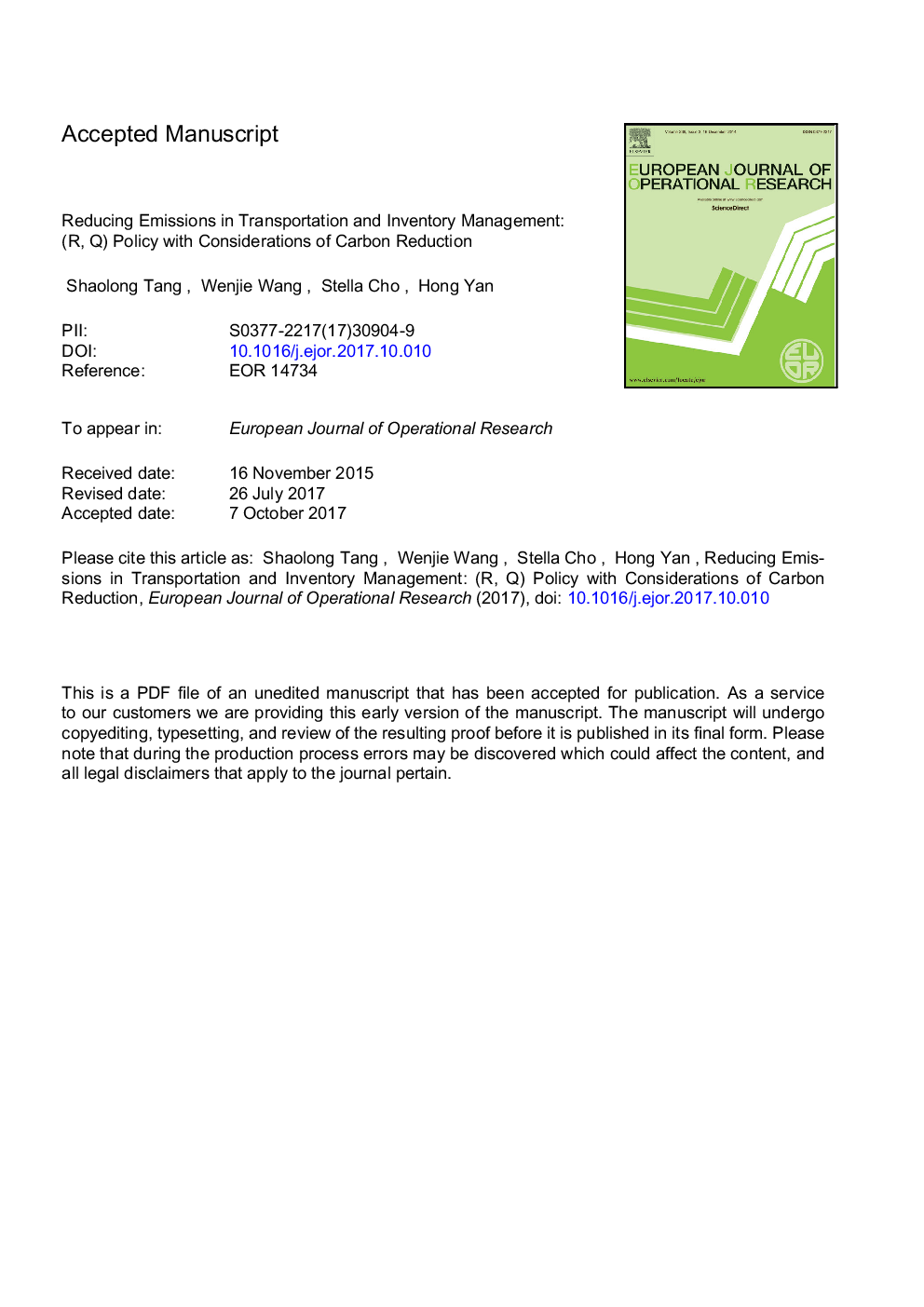| Article ID | Journal | Published Year | Pages | File Type |
|---|---|---|---|---|
| 6894771 | European Journal of Operational Research | 2018 | 39 Pages |
Abstract
In this study, we examine three approaches on the effects of controlling carbon emissions in transportation and inventory management. A Business-As-Usual Scenario Model (BAUSM), which delineates how carbon footprints from inventory storage and related transportation are captured, is firstly developed as the benchmark model. Based on BAUSM, we then develop three models with different carbon reduction approaches. The first one is constructed by adding a constraint to represent the percentage target of emission reduction. The second one integrates carbon taxes (or cap-and-trade scheme) into inventory management, and the last one takes both reduction target and carbon offset opportunities into account. Our work provides new analytical models, which integrate cost and emissions in transportation and storage under the framework of continuous inventory review (R, Q) policy for stochastic demand. Optimization algorithms are developed for solving models and related properties are investigated to examine the effects of carbon reduction and associated costs of three models. The policy implications of the models are examined and discussed to provide insights for reference of the practitioners and the policy makers.
Keywords
Related Topics
Physical Sciences and Engineering
Computer Science
Computer Science (General)
Authors
Tang Shaolong, Wang Wenjie, Cho Stella, Yan Hong,
